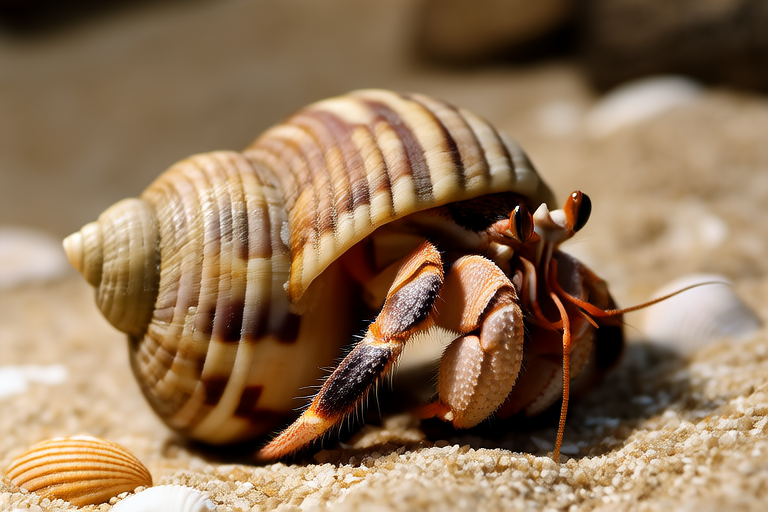Hermit Crab Care: Tips and Tricks for Happy Shell-Changing Friends
Welcome to the wonderful world of hermit crabs! These unique and fascinating creatures make delightful pets for those who want a low-maintenance yet interactive companion. Hermit crabs are social animals that thrive when provided with the right environment and care. This article will guide you through everything you need to know about hermit crab care, from setting up their habitat to understanding their dietary needs and shell-changing behaviors.
Essential Care Guidelines
Caring for hermit crabs is relatively simple, but there are some key aspects to keep in mind. First and foremost, it’s important to understand their natural habitat. Hermit crabs originate from tropical areas, so they require warm temperatures and high humidity levels to stay healthy.
To maintain optimal conditions, use a thermometer and hygrometer to monitor temperature and humidity inside the tank. Aim for temperatures between 75°F and 85°F (24°C to 29°C) and humidity levels between 70% and 80%. A heat mat or under-tank heater can help maintain these conditions, while a misting bottle or humidifier ensures proper moisture.
Additionally, hermit crabs are nocturnal, so they’re most active at night. They enjoy burrowing and climbing, so provide plenty of substrate and climbing structures within their enclosure. A mix of sand, coconut fiber, and crushed coral works well as a substrate, allowing them to dig and create tunnels.
Habitat Setup
Setting up a suitable habitat is crucial for your hermit crab’s wellbeing. Start by selecting an appropriate tank size; a 10-gallon aquarium is sufficient for a small group of hermit crabs. Ensure the tank has a secure lid to prevent escapes, as hermit crabs are excellent climbers.
In addition to substrate, include various shells for your hermit crabs to explore and potentially adopt as their new home. Offer a variety of sizes and shapes to accommodate different preferences. Shells should be cleaned thoroughly before introduction, either by soaking in saltwater or boiling briefly.
Provide hiding spots such as caves, tunnels, or driftwood pieces. These not only offer shelter but also encourage natural behaviors like burrowing and exploring. Climbing structures like branches or artificial vines add enrichment and exercise opportunities.
Diet Requirements
Hermit crabs are omnivores, meaning they eat both plant and animal matter. Their diet should consist of a balanced mix of commercial hermit crab food, fruits, vegetables, and occasional protein sources. Commercial hermit crab food provides essential nutrients and minerals, while fresh produce adds variety and interest.
Fruits and vegetables suitable for hermit crabs include apples, bananas, carrots, sweet potatoes, and leafy greens. Always wash and cut produce into small pieces before offering it to your crabs. Rotate foods regularly to avoid boredom and ensure a diverse diet.
Protein sources can include boiled egg whites, cooked chicken, or fish. Feed these sparingly, once or twice a week, to avoid digestive issues. Never feed your hermit crabs processed foods, sugary treats, or dairy products, as these can be harmful.
